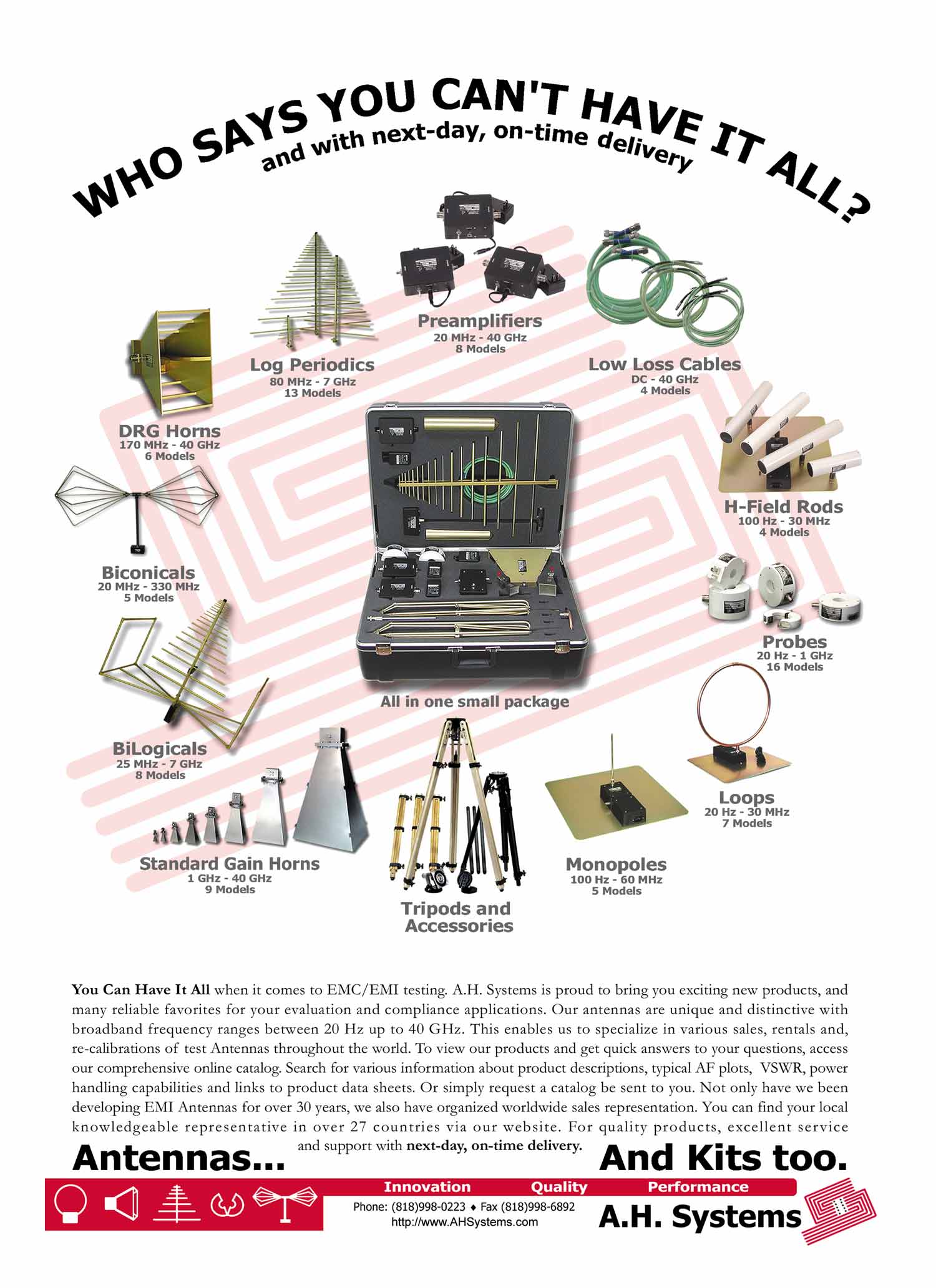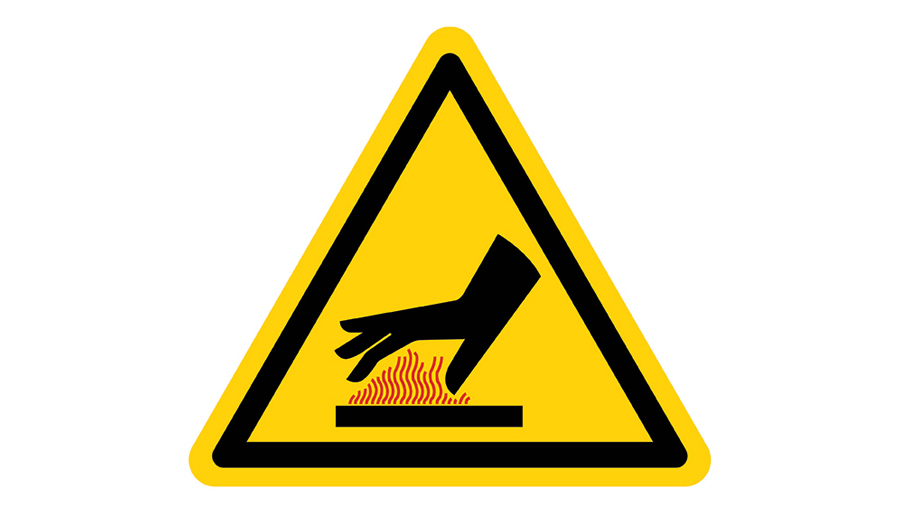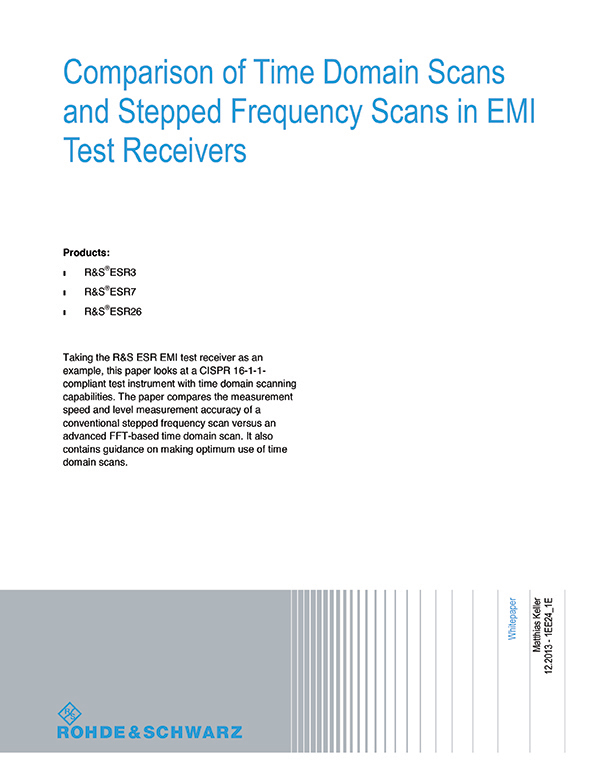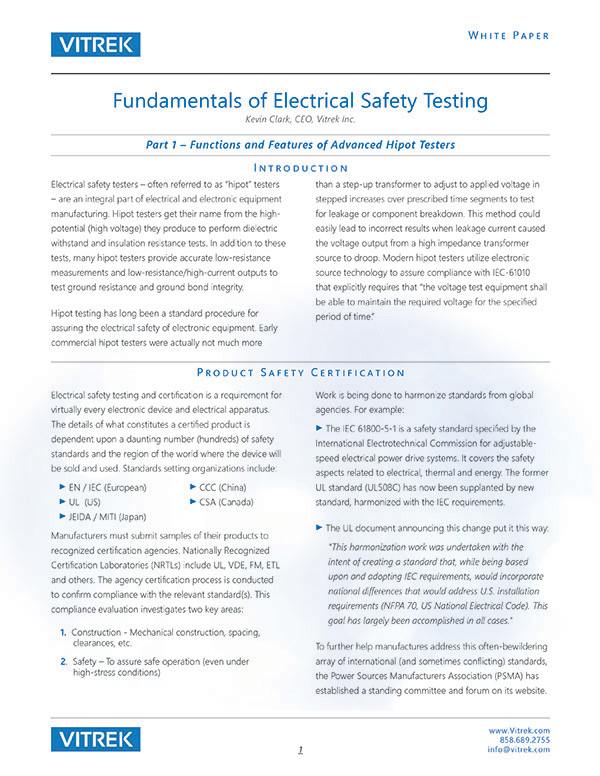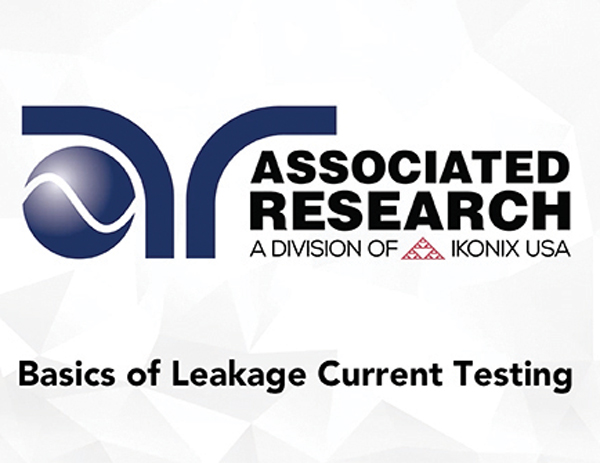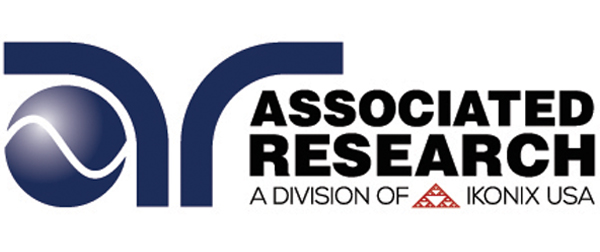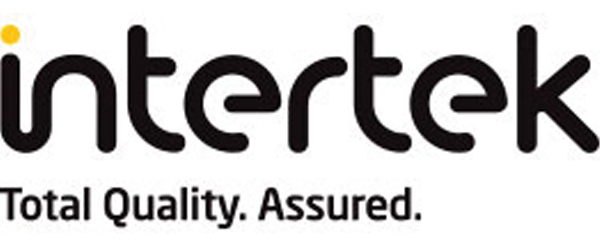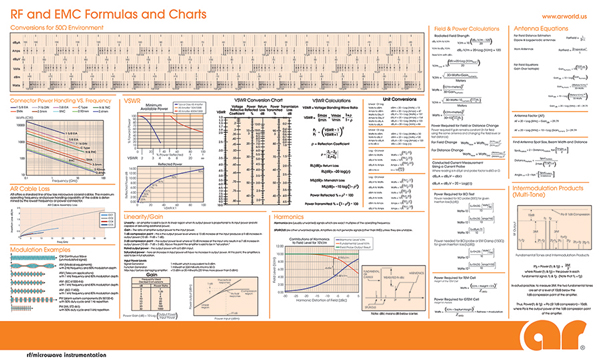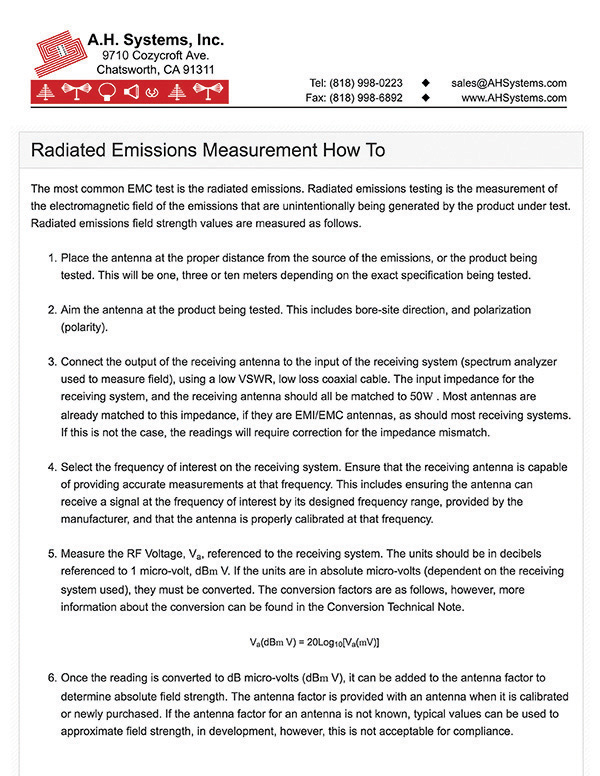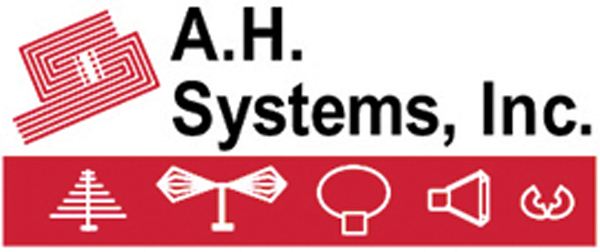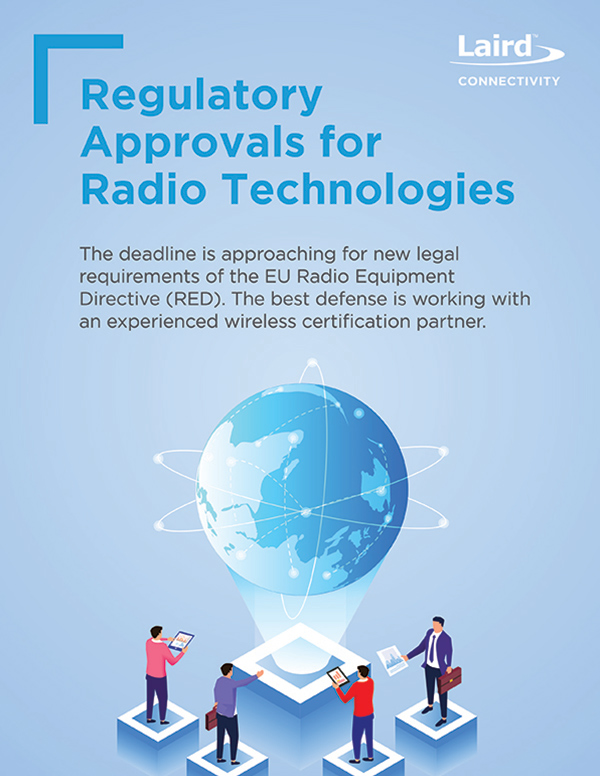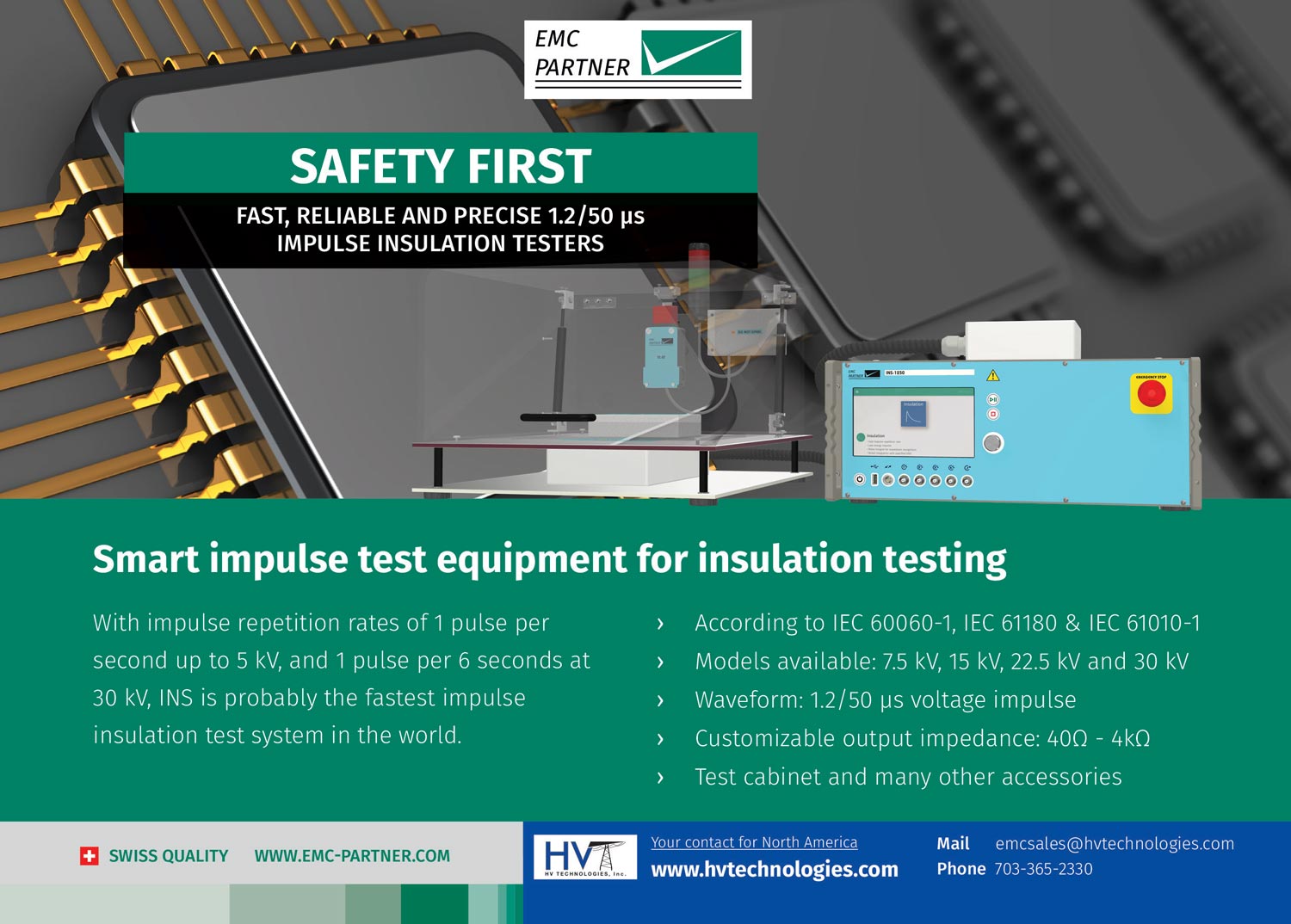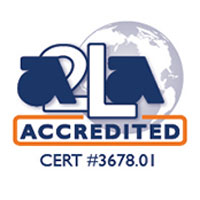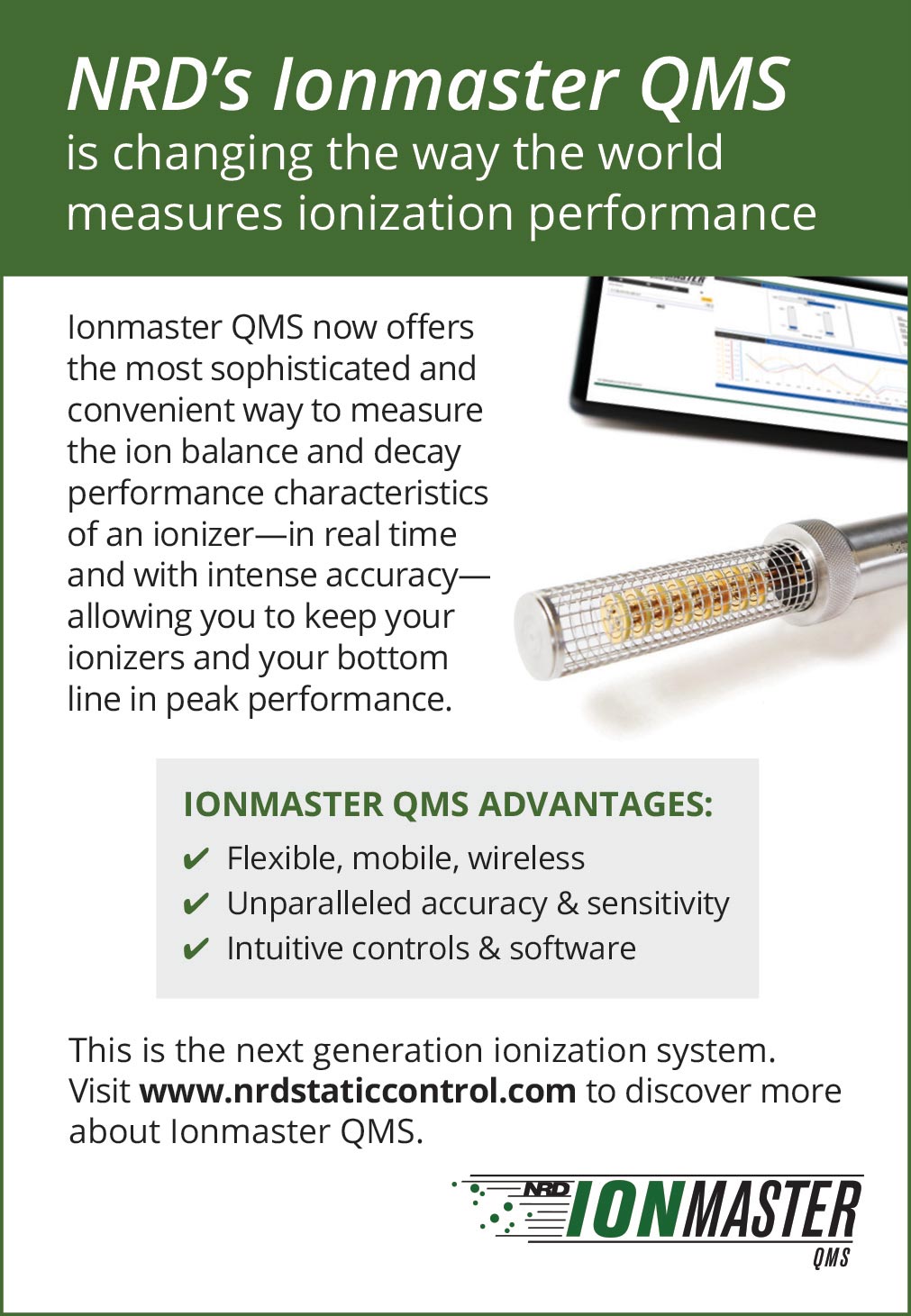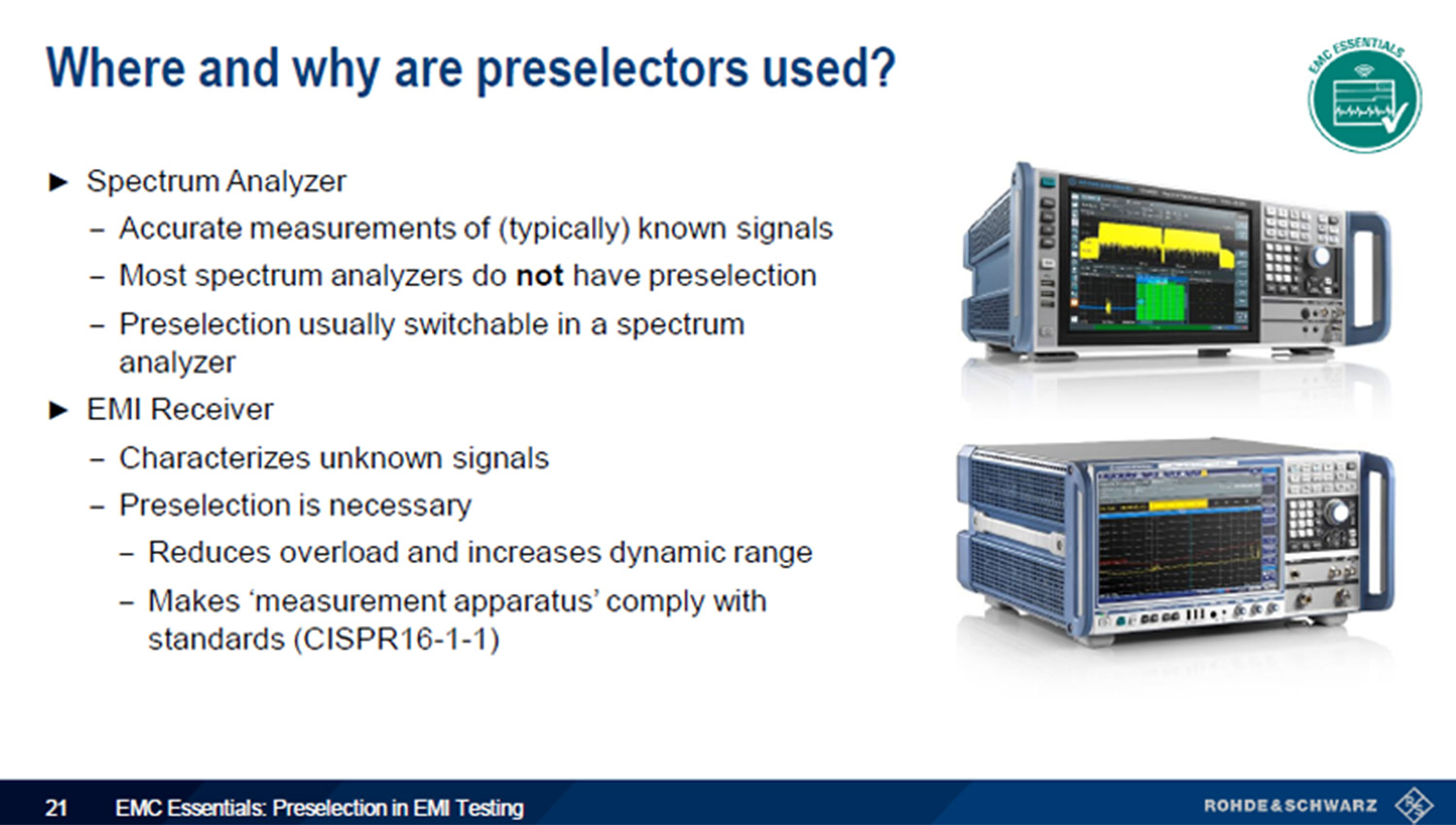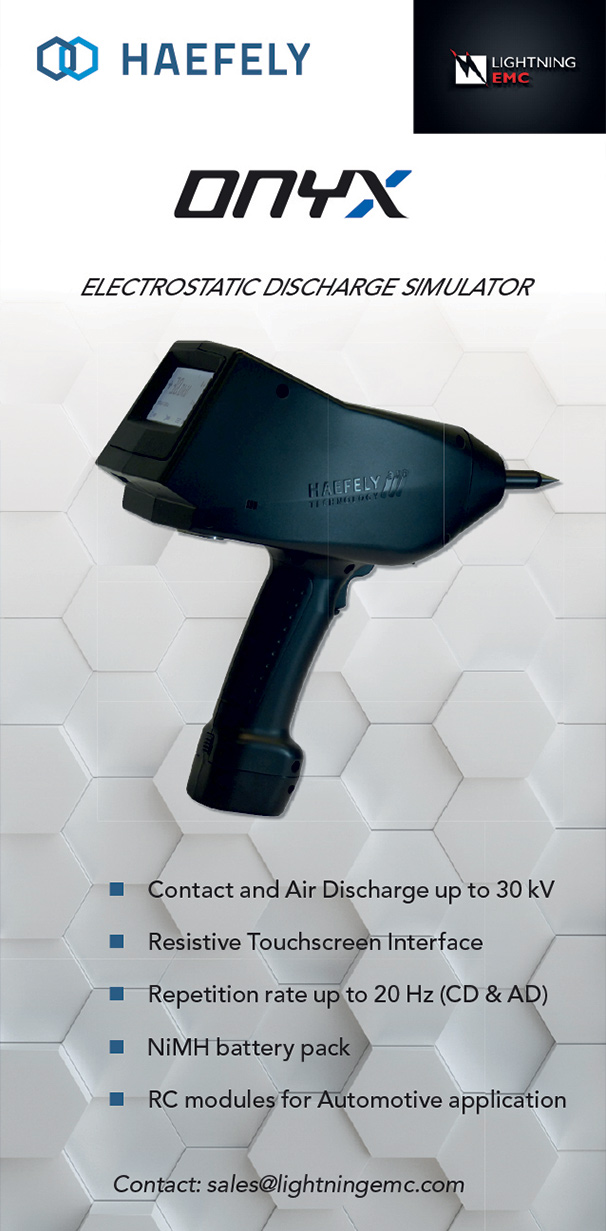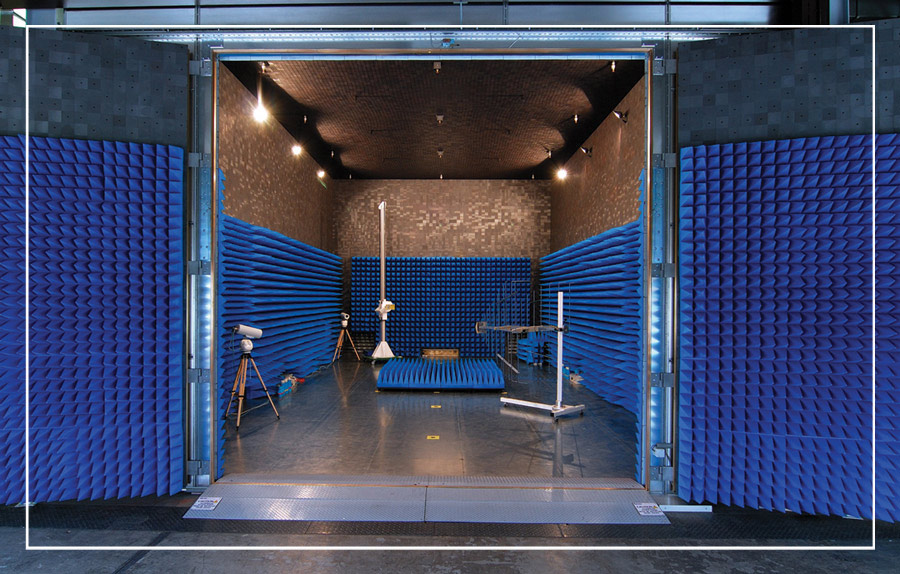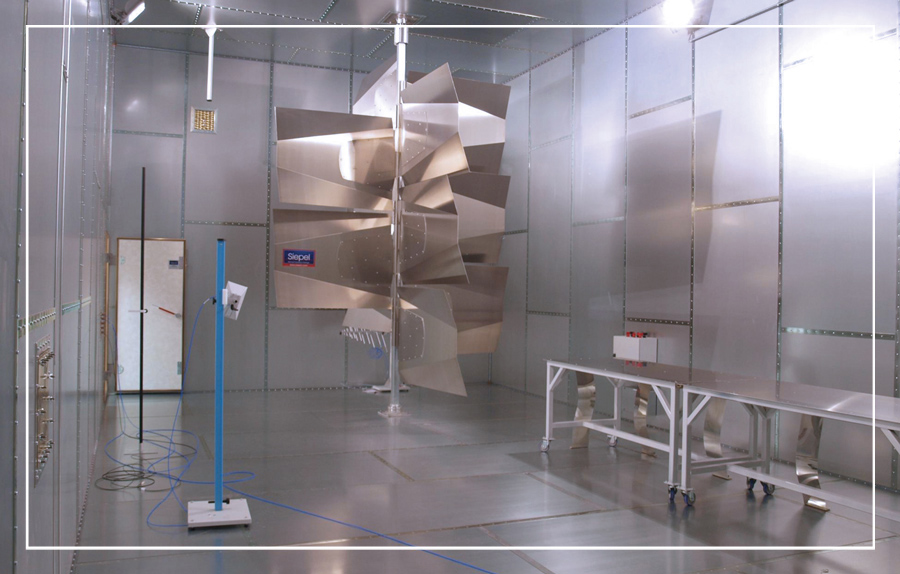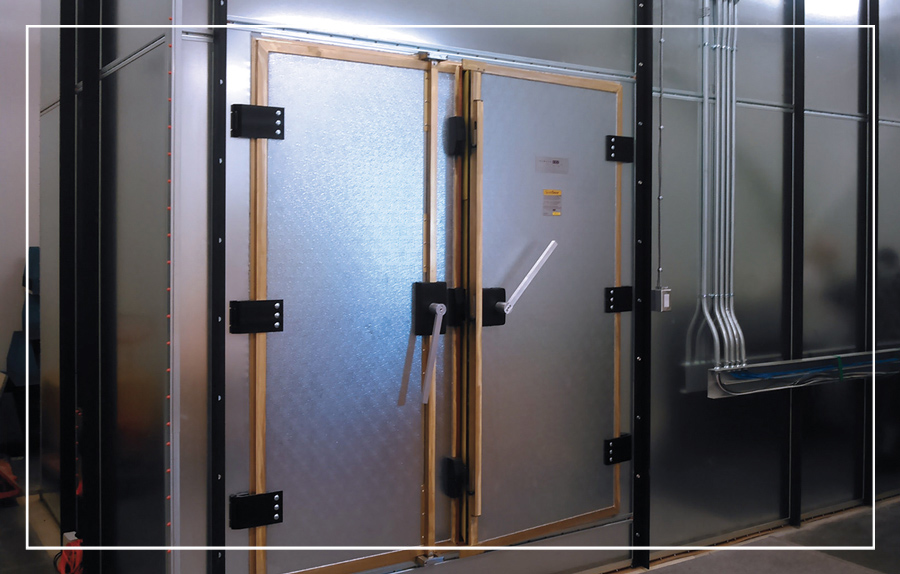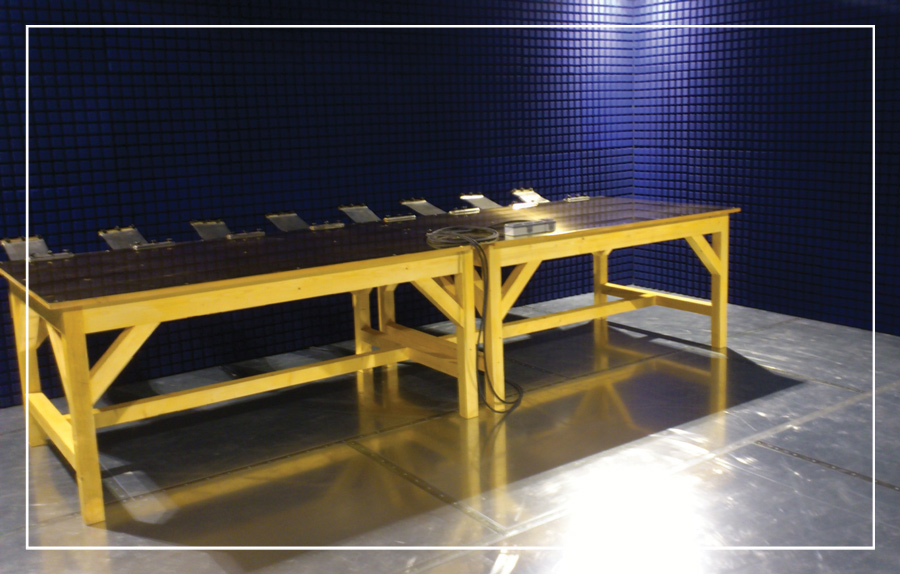
Optional Safety

in Australia
Controlling Static Electricity:
A 50-Year History
Contact Burn Injuries:
The Influence of Object Thermal Mass
in Australia
Controlling Static Electricity:
A 50-Year History
Contact Burn Injuries:
The Influence of Object Thermal Mass

ISSN 1948-8254 (print)
ISSN 1948-8262 (online)
is published by
Same Page Publishing Inc.
451 King Street, #458
Littleton, MA 01460
tel: (978) 486-4684
fax: (978) 486-4691
©Copyright 2021 Same Page Publishing, Inc. all rights reserved
Contents may not be reproduced in any form without the prior consent of the publisher.
While every attempt is made to provide accurate information, neither the publisher nor the authors accept any liability for errors or omissions.
publisher
bruce@brucearch.com
keith.armstrong@
cherryclough.com
Leo@EisnerSafety.com
dgerke@emiguru.com
ken.javor@emcompliance.com
kenrossesq@gmail.com
wernerschaefer@comcast.net
Subscriptions outside North America are $129 for 12 issues. The digital edition is free.
Please contact our circulation department at circulation@incompliancemag.com

white paper provided by

In a press release issued by the FCC, the FCC named three carriers, China Unicom Americas, Pacific Networks, and ComNet, which it says are owned and controlled by the government of the People’s Republic of China.
In response to the substantial evolution of security threats in the past few years, the Commission has raised concerns about the vulnerability of Chinese state-owned enterprises to direct control by the government. Last year, the FCC requested that each of the three companies show cause why the Commission should not revoke their authorizations under its Section 214 authority…
According to an article posted on the Drone DJ website, the upward radar device is based on a new technology developed by DJI, an established drone company based in Guangdong, China. It is described in the company’s FCC filing as “DXX – Part 15 Low Power Communication Device Transmitter,” which operates on the 24.15 GHz frequency…


e all remember when Sears sold products as “good,” “better,” and “best.” Many times, the more expensive products had better quality and, sometimes, better safety. When airbags were first sold on U.S. automobiles, they were optional. They didn’t become mandatory until the U.S. government required it. And even today, you can buy a car with two airbags or some with in excess of ten airbags. It is a rational assumption that the more airbags your car has, the safer it is.
Some reasons for differences in the safety of products include multi-functional uses of the product where some safety devices are not necessary, different price points, requests by customers, adoption of safety improvements, and inconsistent regulations and standards between the U.S. and foreign countries.
The issue of the level of safety to which your products must be designed is intertwined with the two issues that will be discussed in this article. First, is it permissible to sell similar products with different levels of safety? Second, if you do, how do you minimize risk and is it permissible to sell one product with optional safety features? Both issues have generated quite different answers from the courts, making it difficult to decide what to do.
Other ar divisions: modular rf • sunar rf motion • ar europe
Other ar divisions: modular rf • sunar rf motion • ar europe
Our patented and re-retardant absorbers are RoHS and REACH compliant; they do not release carbon dust nor carry heavy poisonous chemicals.
With our pan-type RF shielding construction and absorbers that don’t absorb humidity, your test measurement accuracy is preserved over time.
To find out more about the dependable choice in chambers and absorbers, visit www.arworld.us/chambers or call 215-723-8181.
Our patented and re-retardant absorbers are RoHS and REACH compliant; they do not release carbon dust nor carry heavy poisonous chemicals.
With our pan-type RF shielding construction and absorbers that don’t absorb humidity, your test measurement accuracy is preserved over time.
To find out more about the dependable choice in chambers and absorbers, visit www.arworld.us/chambers or call 215-723-8181.
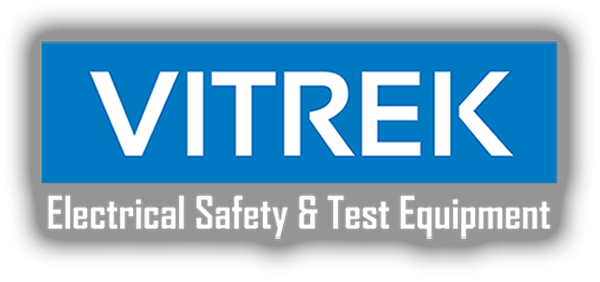
- Three power ratings available – 125W, 250W & 500W
- Input Voltage options – 0-150V or 0-500V
- Variety of loading sequences in single or arbitrary sequences of up to 100 steps
- High speed performance from flexible operating modes using any combination of:
– Constant Resistance (CR)
– Constant Power (CW)
- Three power ratings available – 125W, 250W & 500W
- Input Voltage options – 0-150V or 0-500V
- Variety of loading sequences in single or arbitrary sequences of up to 100 steps
- High speed performance from flexible operating modes using any combination of:
– Constant Voltage (CV)
– Constant Resistance (CR)
– Constant Current (CC)
– Constant Power (CW)
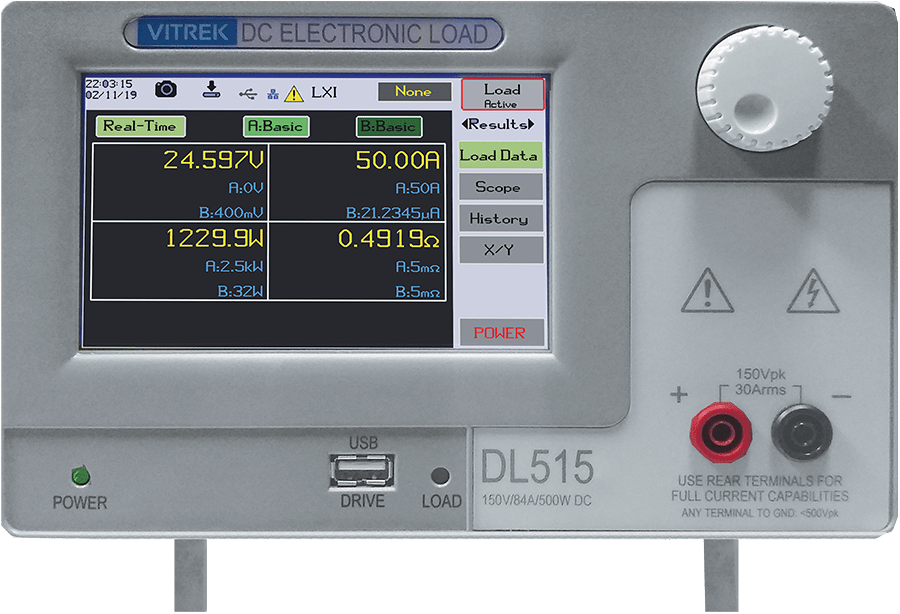

n Australia, all electrical and electronics devices, including cellular modules, need to comply with the requirements of the Regulatory Compliance Mark (RCM). The RCM is of two parts jointly owned by the Australian Communications Media Authority (ACMA) and the Electrical Regulatory Authorities Council (ERAC). Cellular approvals are technically complex and involve all aspects of the ACMA regulations and the ERAC Electrical Equipment Safety System (EESS) RCM certification process.

t is well understood that static electricity has been with us forever. Our awareness of problems associated with static electricity probably originated with the invention of gun powder when, no doubt, there were some mysterious ignitions that took place during chemical blending operations that could not be explained at the time.
The manifestation of static electricity problems in an industrial setting likely began with Gutenberg’s invention of the automatic printing press in 1440.1 Paper and velum (two different materials) sticking together had to be an issue. Somewhere along the line, it was likely observed that a fire burning in the vicinity of the printing press could magically make the paper less sticky. Flame treatment was used in industrial printing presses back then and in newspaper printing presses well into the 1950s, and perhaps even longer in some areas.
Static control has been practiced in munitions, modern pyrotechnics, petroleum processing, and other industries dealing with explosive and flammable materials for a long time. The grounding of process tools, equipment, and personnel has been practiced since Ben Franklin’s time.
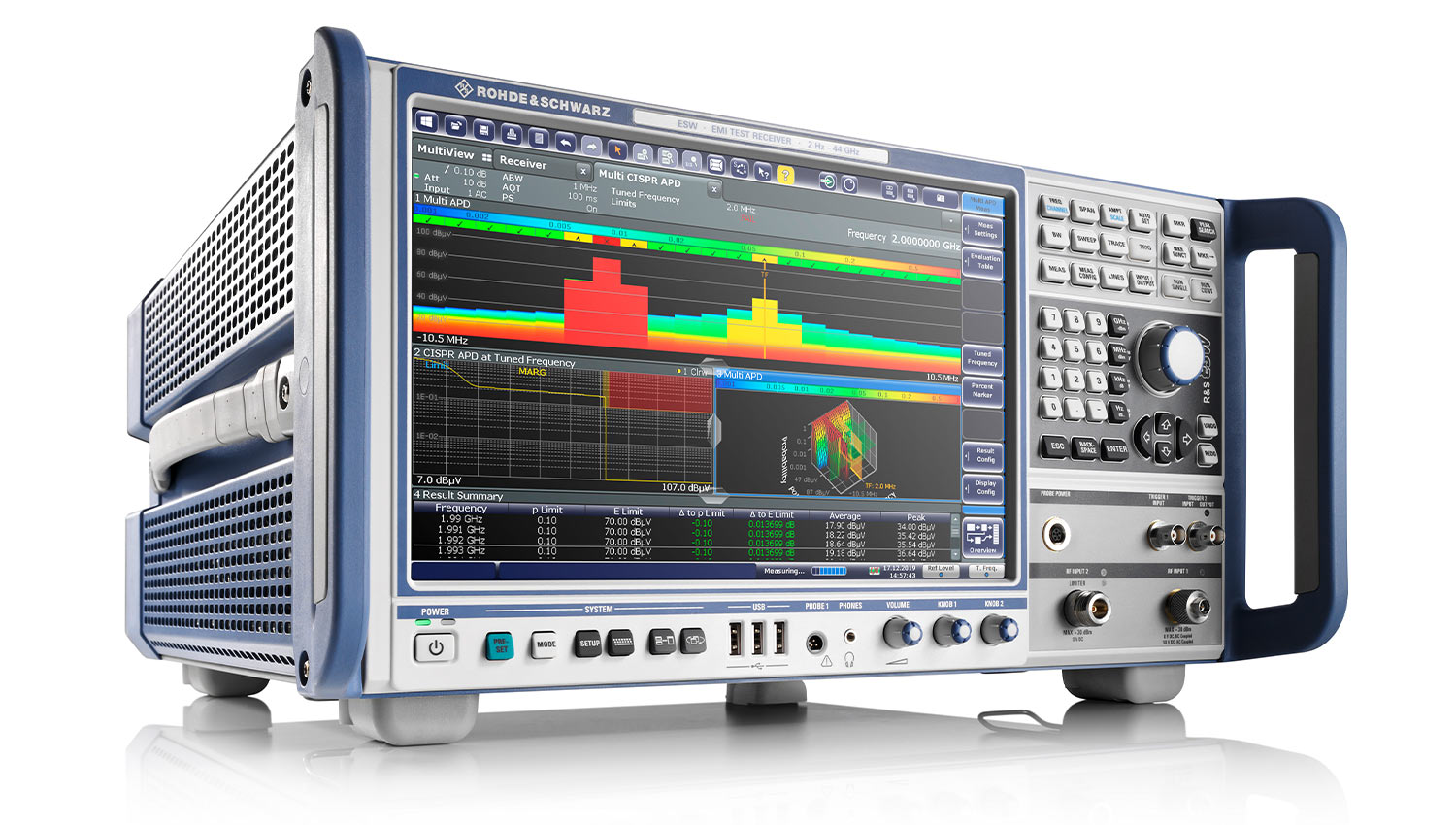
not accuracy
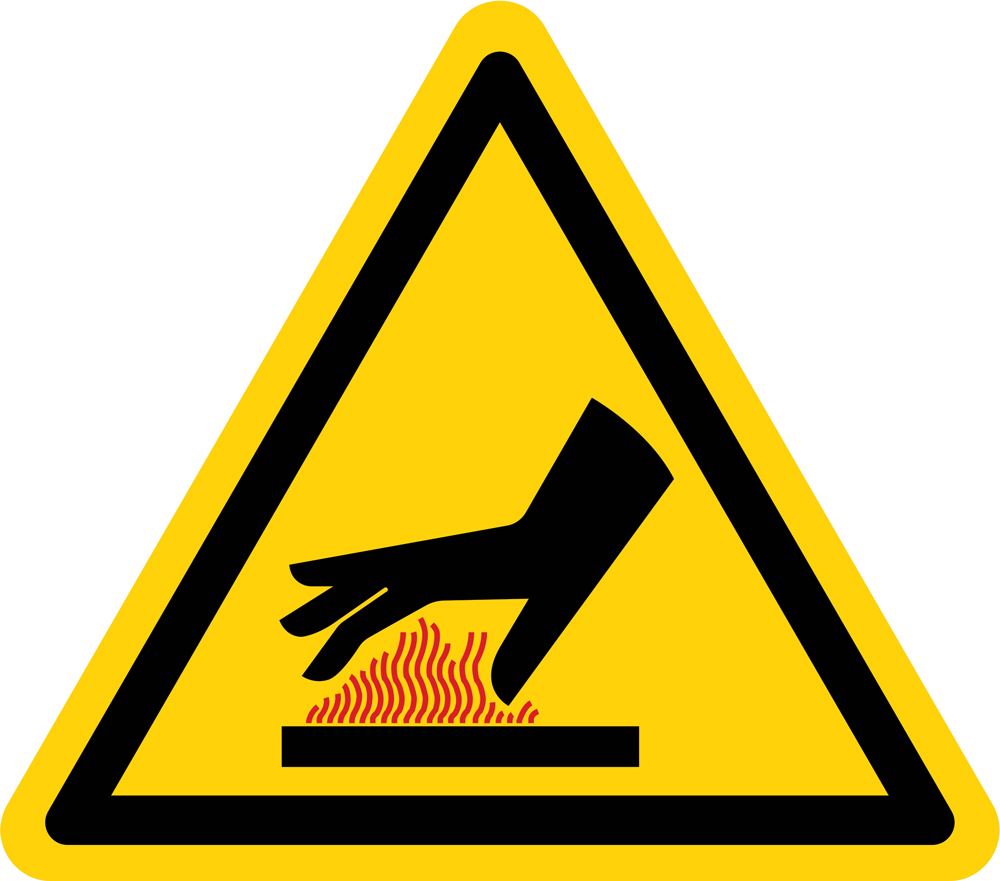
Part II of this paper, “The Influence of Object Shape, Size, Contact Resistance, and Applied Heat Flux”, is available through the IEEE Explore archives at http://www.ieeexplore.ieee.org.
he skin is made up of three distinct layers. The top layer of the skin that does not contain blood vessels and functions as the protective barrier of the skin is called the epidermis. The layer underneath the epidermis is called the dermis and contains blood vessels and nerve endings. Under the dermis is the subcutaneous fat also known as the hypodermis. Basal skin cells are located underneath the epidermis and are responsible for the generation of new tissue.
his is the first of a series of articles devoted to the design, test, and EMC emissions evaluation of 1- and 2-layer PCBs that contain AC/DC and/or DC/DC converters and employ different ground techniques. In this introductory article, we present a top-level block diagram description of the design problem under research. The subsequent articles will be devoted to the specific parts of the design, and subsequently to the RF emissions performance of the PCB assembly. This is a research in progress. The goal of this study is to evaluate the impact of different grounding strategies and the tradeoff with other design constraints that designers often face.
or decades, Moore’s law has been driven by the downscaling of transistor dimensions on silicon. When reaching the ultra-advanced integrated circuit (IC) fabrication technologies in the single-digit nm regime (currently 5 nm CMOS is in volume ramp) there is little headroom left, and a different path of packing more functionality into an even smaller volume at the lowest power and cost has to be taken. 3D and 2.5D IC packaging technologies have become primary candidates to serve this purpose [1]. Both packaging technologies, which are often also referred to as ‘heterogenous integration’, have reached the maturity for volume production and can already be found in products.
A valid question to ask is what is 3D or even 2.5D packaging about? 3D packaging means to stack dies of silicon on top of each other and contact them in large numbers by die-to-die connections (see Figure 1). Today thousands of interconnects are running between a bottom die and a top die. This is predicted to grow into the tens of thousands to millions of interconnects per square millimeter of die area. One essential step in the process is to use so-called through silicon vias (TSVs) to route power and signals from the bottom side to the top side of a die. 2.5D packaging in contrast describes the assembly of silicon dies side-by-side atop an interposer substrate, which serves as a carrier on which the routing lines/connectivity between the dies are implemented (Figure 2).

This October, Chris van Rossman of Corvallis Oregon turned on his do-everything combo TV and got a big surprise—the police, the Civil Air Patrol, and the County Search and Rescue Officers knocked on his door. Apparently, Mr. van Rossman’s flat screen, VCR/CD/DVC combo TV had developed some sort of strong emission (a parasitic oscillation, more than likely) at 121.5 MHz, which is a rescue frequency used by aircraft and boat distress transponders and monitored by orbiting satellites. This service uses an uncoded analog carrier detection system, and is therefore rather sensitive to unauthorized transmissions…
It has been reported widely in the Japanese press that electromagnetic interference caused by illegally modified transceivers on trucks is suspected of causing two accidents by disabling the braking system of commuter buses. Mitsubishi Fuso Truck & Bus Corporation announced that two models of its buses are adversely affected by high-powered EMI from short distance and its braking system may not function properly under such conditions. Specifically, its braking system that detects the wheel-locking condition falsely triggers due to the EMI and thus the brake doesn’t work as intended…
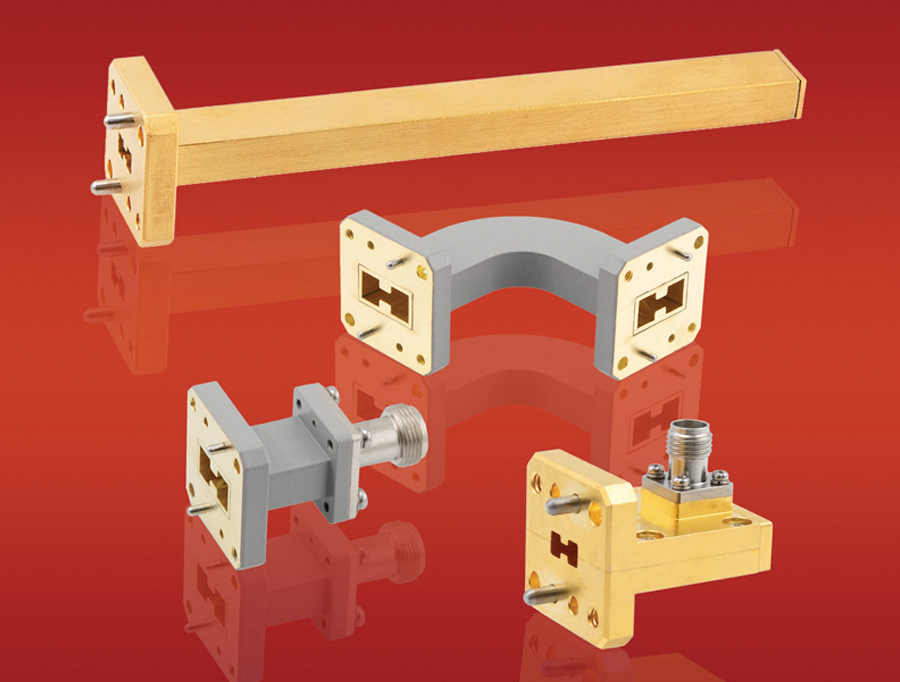
Fairview Microwave,
an Infinite Electronics brand
http://www.infiniteelectronics.com
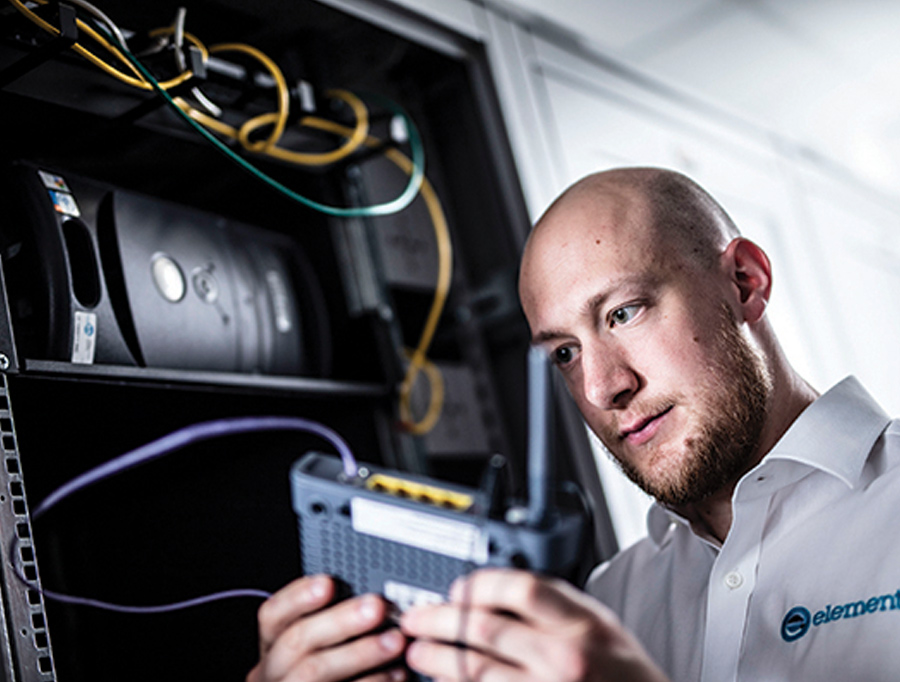
Element Materials Technology
http://www.element.com
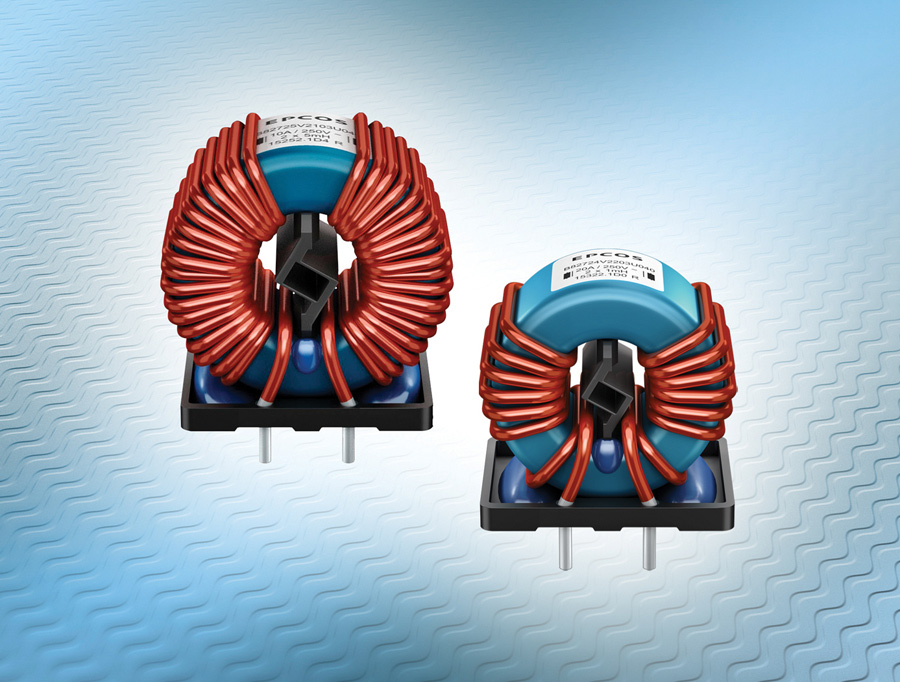
TDK Corporation
http://www.tdk-electronics.tdk.com
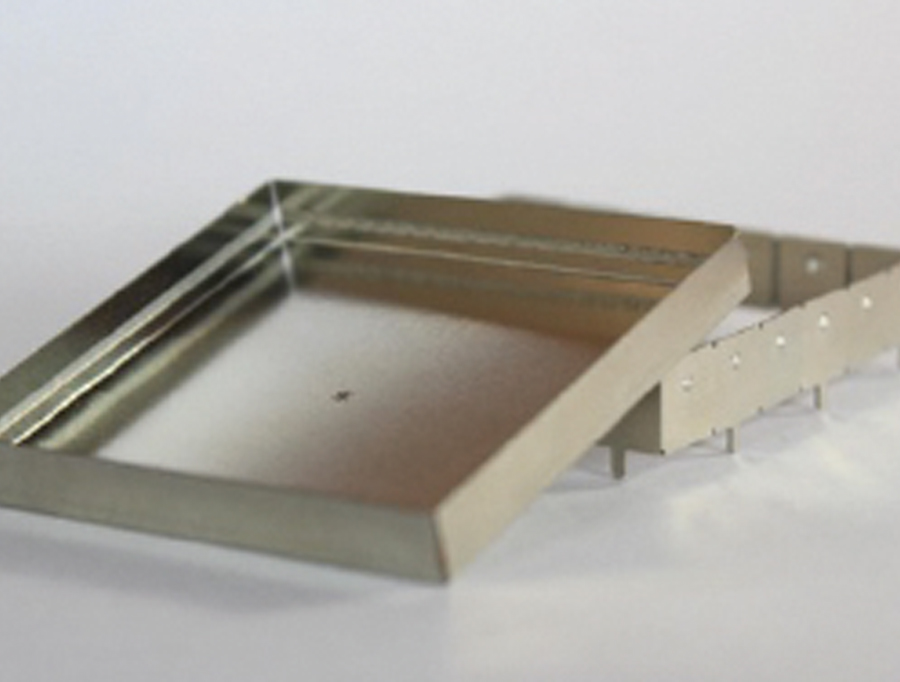
Orbel
http://www.orbel.com
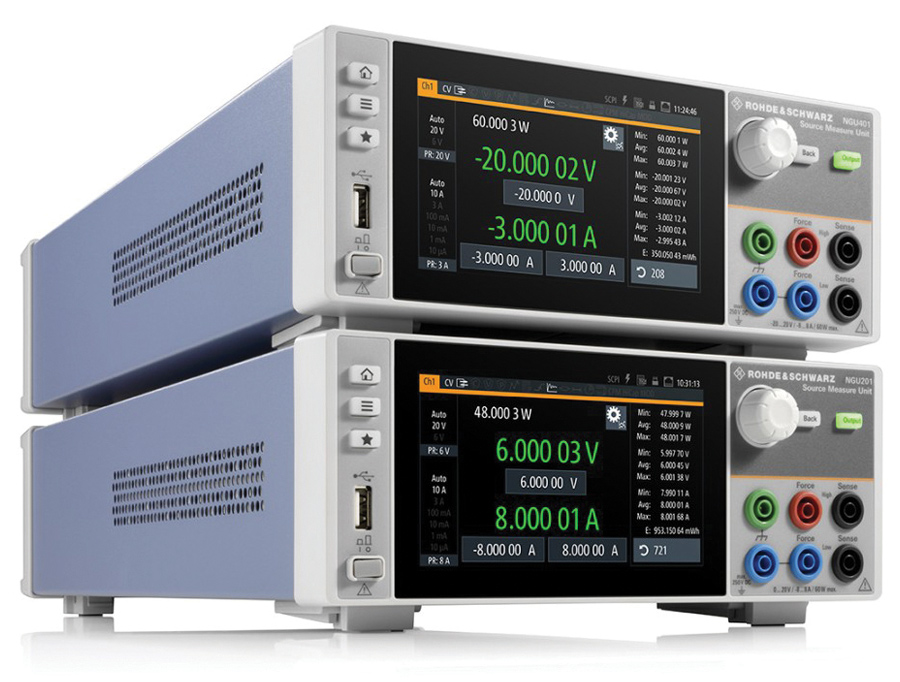
Rohde & Schwarz
http://www.rohde-schwarz.com
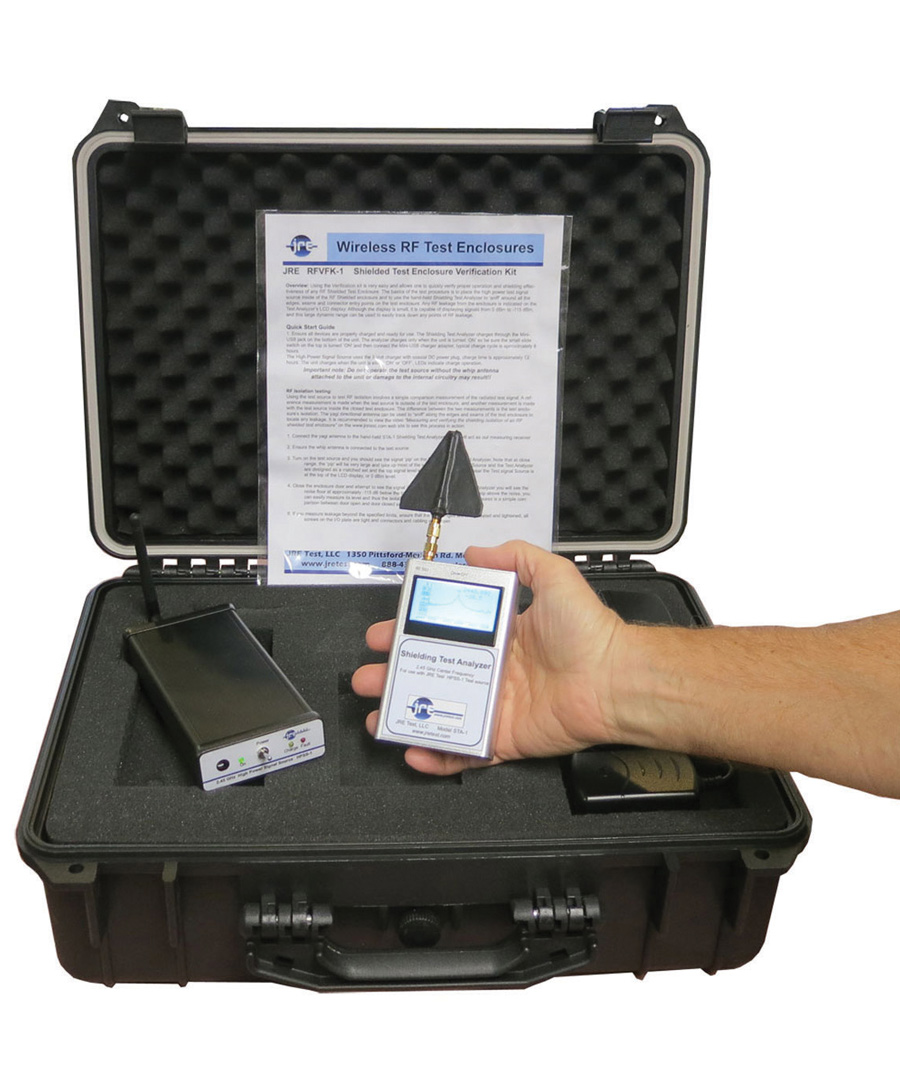
Saelig Company, Inc.
http://www.saelig.com
Annual Chicago IEEE EMC MiniSymposium
May 11-14
Applying Practical EMI Design & Troubleshooting Techniques
May 13
EMC Fest 2021
May 17-20
IEEE International Instrumentation & Measurement Technology Conference
May 18-20
The Battery Show: Digital Days
May 19
EMC & Compliance International (EMCUK) 2021
International Microwave Symposium (IMS)
June 15-18
Applying Practical EMI Design & Troubleshooting Techniques
June 26
IEC International Special Committee on Radio Interference (CISPR)
June 28-30
Sensors Expo and Conference
View Index

- Anechoic and Reverb Chambers
- RF Shielded Enclosures, including Deployable Solutions
- Upgrades, repairs, maintenance, relocation, testing
- Responsive service by our seasoned team of experts
Follow us on


